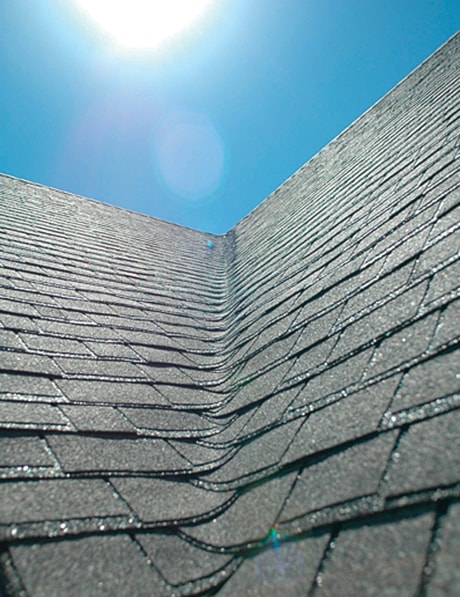I’m gearing up to reshingle my roof this spring, and there are four specific technical details I’m working into the job.
If you share my conviction that home maintenance work should last as long as possible, let me fill you in on the thinking behind the decisions I’m applying at my own place.
The first issue is shingle quality. Since labour is the costliest part of installing any new roof (especially when you factor in the cost of stripping off old shingles), it makes economic sense to choose the longest lasting shingles you can.
These days you’ll find the best are rated to last 40 and even 50 years. The specific ones I’m choosing for my own place are a brand of fiberglass shingles I’ve used successfully before.
They withstand heat better than traditional organic shingles and they’re rated to withstand wind speeds greater than 160 km/h.
While I have the roof stripped back to bare sheathing, I’m going to strengthen the bond between the plywood and the underlying rafters using nails designed specifically for this job.
Stanley’s Hurriquake nails are made with an extra-large head and special shank that resists nail withdrawal much better than the ardox nails typically used for this application.
Nail withdrawal from rafters is the leading cause of roof failure in high wind weather events and the major reason for catastrophic house damage during hurricanes and major storms.
If you can keep the roof on, you’re generally okay when things get nasty.
Hurriquake nails are also more shear-resistant than regular nails, boosting earthquake resistance of structures by 300 per cent.
This isn’t an issue with roofs, but it does makes sense when securing siding on new structures.
Hurriquake nails fit traditional, full-head nail guns so it’ll be easy to fire them alongside to the existing hand-driven nails I hammered into the sheathing when I built the place originally 20 years ago.
Roof underlay is another thing I’ve been thinking about. The traditional approach is to put tar paper underneath shingles before you nail them down.
Lately this practice has morphed into the use of self sticking water shield as a durable underlay that’s quite capable of shedding water long-term even if shingles get completely torn off.
And even though I was planning to apply this technique to my own roof, I’ve decided to do something else that should make my walk-up attic loft cooler and more comfortable in summer.
Delta Roof is a line of high-performance roof underlay products that’s unique as far as I know. There are five different underlays in the line, and I’ll be using a reflective product that’s supposed to reduce heat build up on the roof surface by 50 per cent.
Time will tell if this is true, but it’ll be easy to tell by monitoring attic temperature.
If this product does what it claims to, it’ll offer summertime energy savings even in homes with conventional attics. Reduced roof temperature will also extend shingle life.
My roof’s got four long, steep valleys and I’ll be covering them completely with a woven pattern of shingles instead of the more traditional, open valley approach.
I’ve heard lots of explanations over the years about why shingles need to be trimmed so they stop short of the center of roof valleys, in an open pattern, but I don’t buy any of them. Experience has taught me otherwise. Closed valleys look better, they’re easier to install ( no trimming of shingles necessary) and they’re much less likely to leak.
Your roof is the first line of defense against the elements, so it makes sense to put extra thought into making it the best it can be. A little effort invested in planning and completion: yields a lot of confidence next time the weather turns nasty.
Steve Maxwell is Canada’s award-winning home improvement expert, and technical editor of Canadian Home Workshop.
